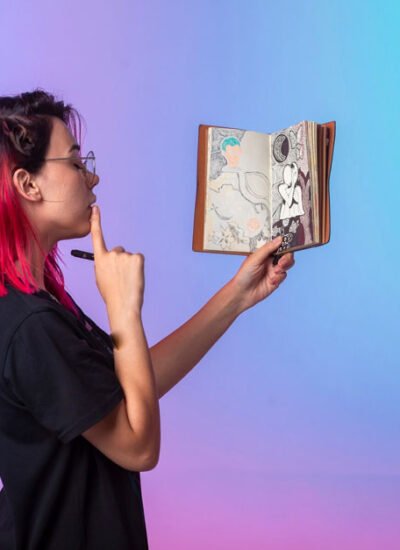Making a name for yourself in art is easier today than ever. Women like Mary Cassatt in the 20th century or, recently, Carrie Mae Weems have changed how art is understood and exchanged. The art market worldwide does well, being estimated at $65BN in 2023, with the online sales market of art and antiques hitting a $11.8BN value the same year. Given this outstanding performance, it’s safe to say that the sector has plenty of room to accommodate both female and male business runners and professionals. Even more, the female presence across auction sales, museum boards, exhibitions, and other ventures in art is being felt increasingly more. Only two years ago, contemporary women artists accounted for 24.5% of art pieces exceeding $1MN in sales, strengthening women’s presence in the art scene and enforcing gender balance.
Nevertheless, while women can assert their artistic merit in this segment, a reality is not to be overlooked. Skill can be a game-changer, but it’s not the only thing to take into consideration. While everyone agrees that acquired and trained abilities boost the likelihood of succeeding, this is far from being the only asset under scrutiny in a world filled with ingenious women. A set of market understanding, a sense for high-value art, shrewdness in practical matters, and other essential aptitudes are necessary.
So, how will you make it to the stage as a woman in a market with increasingly fierce competition? Let’s see the abilities mastered by famous women in arts that could also set you up for success.
Train your eye for high-return art
Whether you are looking to purchase, bid, or loan, and no matter if you’re eyeing art fairs, exhibitions, or online repositories, it’s essential to have a sharp eye for worthy art. Much like developing the palate for wine tasting, you’ll have to explore all artistic movements and periods, scrutinizing the past, present, and future trends. Here, it’s essential to fathom art history to know when a creator draws inspiration from past works, helping you spot details that suggest a growth in a piece’s value over time. Similarly, when it comes to contemporary art, which sells incredibly well these days thanks to its potential to trigger various feelings in every observer, you’ll have to examine both the online and offline market – with emphasis on the former. The market for modern art is amazingly abundant, so the more invested you are, the more you’ll train your eye to recognize art for sale whose worth may surge in time.
That said, make a habit of consuming worthy online content, attending art galleries and fairs, strolling through studios, and joining events and talks to boost your ability to spot investment-quality pieces. Some of these activities may not just help increase your familiarity with pieces that bring ROI, but also engage with investor-minded individuals in the market, opening your horizons. This takes us to the following point.
Build productive relationships
Whether with auctioneers, gallerists, artists, or purchasers, getting to know and creating connections with people standing in your art segment is a vital part of making business. Fortunately, you have numerous opportunities as a woman to do it, most of which boil down to making your presence felt in related outings. You might encounter motivating opportunities and gain entry to exclusive, upscale communities by fostering productive relationships.
While the internet may have transformed how women interact with art, leaving behind the camerawoman’s era, one truth remains unshakeable: you need to connect with fellow women entrepreneurs, gallery managers, business owners, and so on. To do this, you must attend various art gallery openings, focusing on events featuring pieces like the ones you sell or market to ensure you engage with people who could help your business grow. Support artists through donations when you know it can facilitate your venture. Create your own event, bringing in individuals with a similar appreciation for the art segment or style you work to make a name in.
Establishing relationships is key to getting ahead in today’s crowded art world, so seize every valuable opportunity that comes your way, whether in your town or outside your comfort zone.
Appropriate the demand and supply principle
From an economic point of view, artworks are long-lasting products intended for consumers and not only, which may serve as capital assets that rise in price over time. For the consumer category you’re probably targeting, namely art investors and buyers, art becomes a reliable tool for portfolio diversification. Part of art’s appeal lies in its somewhat stable value, which permits entrepreneurs to invest relatively safely since the market holds still when the stock market swings.
Moreover, artwork has demonstrated a tendency to rise or drop in value for pieces characterized by scarcity and uniqueness, particularly when influenced by market demand and emerging trends. Economically, again, the scarcity principle represents a concept where a good with reduced supply that becomes sought-after leads to a disparity between the wanted supply and request balance. In a contemporary context, artworks from famous artist Banksy have skyrocketed in popularity and, consequently, value over the past decade.
Art buying, collecting, and, obviously, selling is risky by default, so learn how to dodge these challenges before leaping and spending irrecuperable money.
Learn to assess risks
We can agree that art buying is a risky feat. Nevertheless, this doesn’t mean you can’t master this skill, assuming you’re dedicated to understanding all the seemingly minor factors impacting the value of an asset (or even art genre and style). Conducting in-depth due diligence to guarantee the genuineness of a piece and the trustworthiness of the vendor is essential, so make it the cornerstone of your investment strategy. Viewing art as a long-term investment instead of a mere, fast-money venture is also paramount.
A solid grasp of the different expenses implied is just as beneficial, meaning that you should grasp transaction fees like droit de suite and auction fees. Plus, upkeep, transportation, and storage additionally drain your wallet. Tax costs are commonplace, too, and can be pretty high if the creation is valued highly.
Making a name in the art industry as a woman can be one of the most rewarding and fulfilling achievements, so don’t step back from the challenges that may come your way. You will thank yourself down the road for your commitment and determination!






Leave a Reply